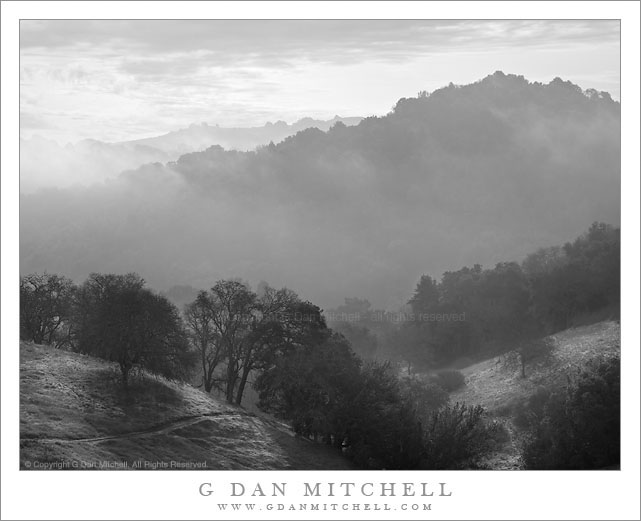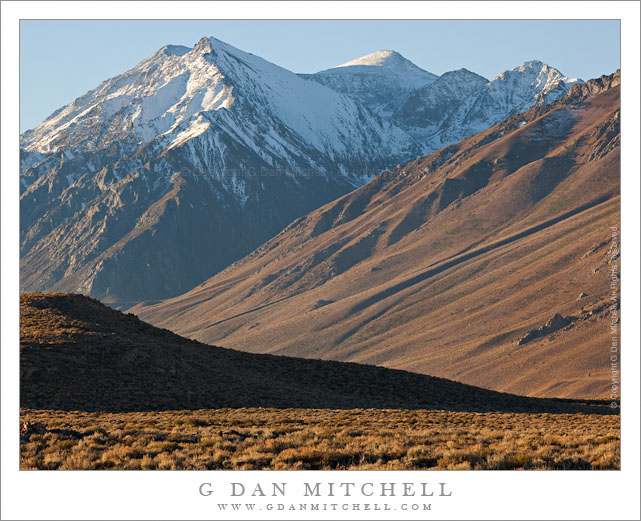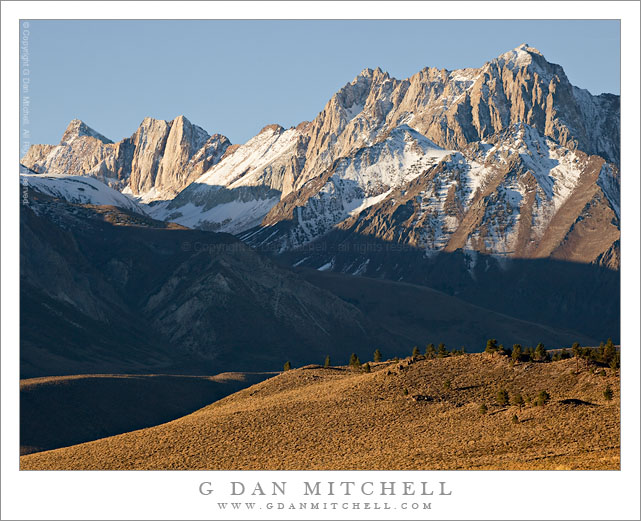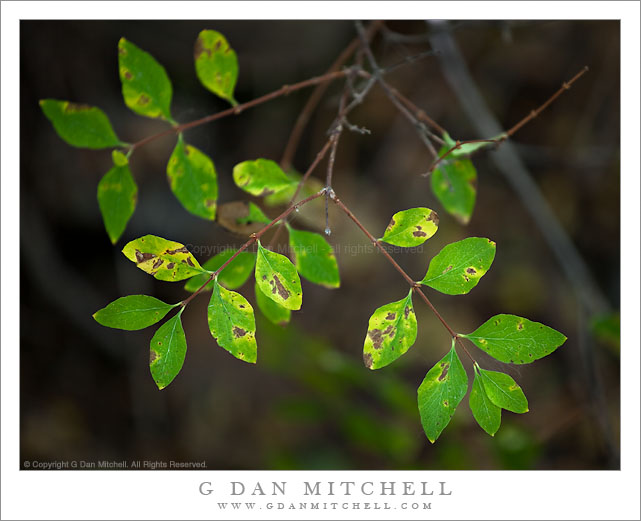Oaks and Hills, Winter Fog. Calero Hills, California. January 9, 2010. © Copyright G Dan Mitchell – all rights reserved.
Morning winter fog clears from the oak forest and grassland of the Calero Hills, California.
This is a sort of scene that seems to me to be a prototypical California view. Almost anywhere you go west of the Sierra and away from either the redwoods or deserts, you won’t be too far from places like this that feature grassland, oak trees, and some sort of vertical relief in the landscape. This area happens to be a short drive from where I live. It is merely a local county park and not a place that most would regard as special. However, because it is so close, I have been able to spend a great deal of time here in all seasons, at all times of the day, and in all sorts of weather conditions. Eventually I found that there is an almost unending supply of potential photographic subjects even in this spot that would certainly not impress most people as being exceptional.
I made this photograph back near the beginning of 2010, and shortly after that a posted an early version here. That version was in a slightly wider format and it was in color. As part of my year-end review of all of my raw files from 2010, I saw this image again in its original form… and this time I saw it a bit differently, in black and white and with a more “traditional” 4:5 ratio format. Contrary to what I though originally, I now think that the narrower format does a more effective job of juxtaposing the stacked angles of close, middle and far ridges, and it also let me eliminate some stuff along the margins that now seems distracting to me.
To the extent that this version of the image works, I think it illustrates something that I’ve heard others say and which resonates with my own experience, namely that it is sometimes easier to “see” what is in a photograph when you get a bit more distance from the act of “capturing” it.
This photograph is not in the public domain and may not be used on websites, blogs, or in other media without advance permission from G Dan Mitchell.
G Dan Mitchell Photography
Flickr | Twitter | Facebook Fan Page | Facebook | Friendfeed | Email




